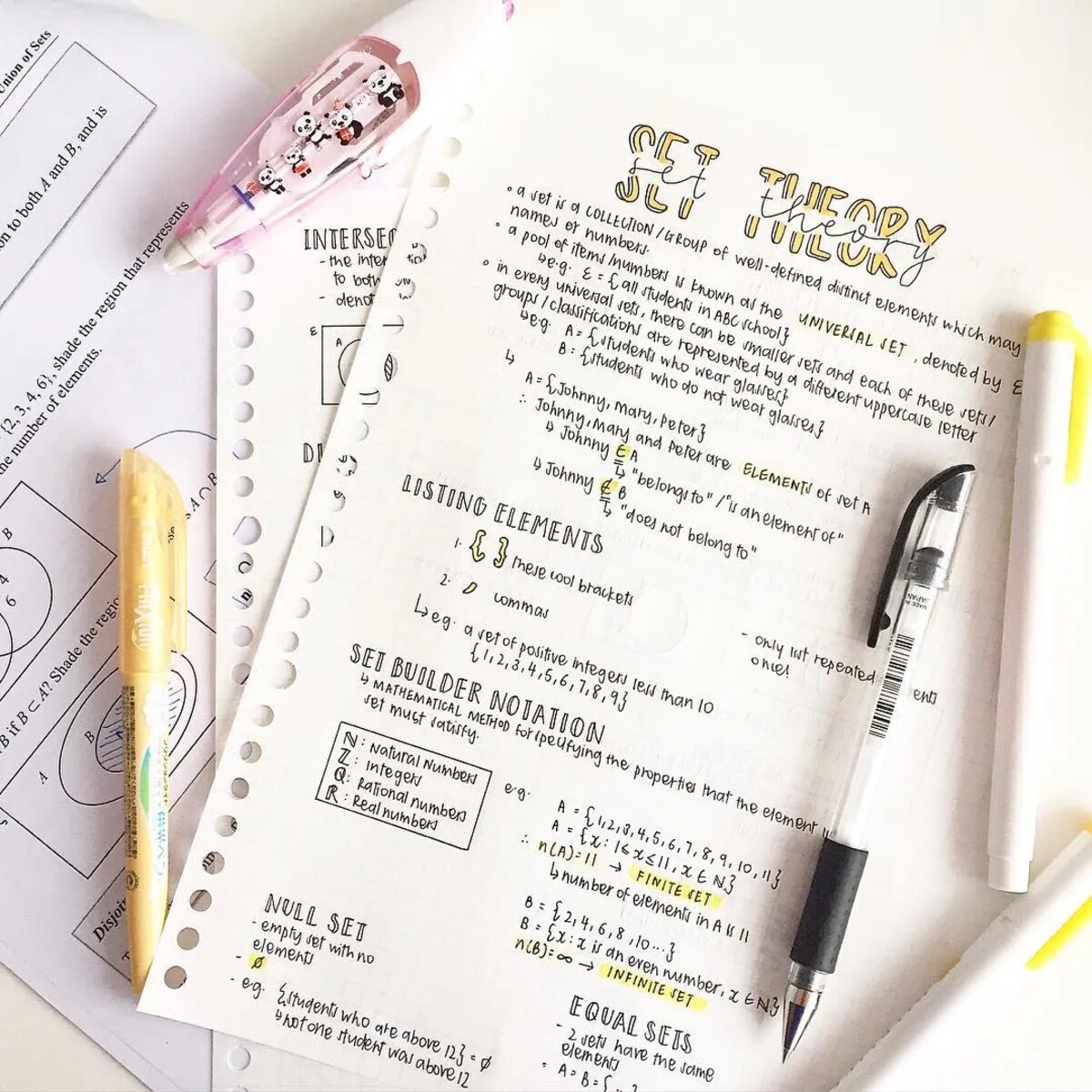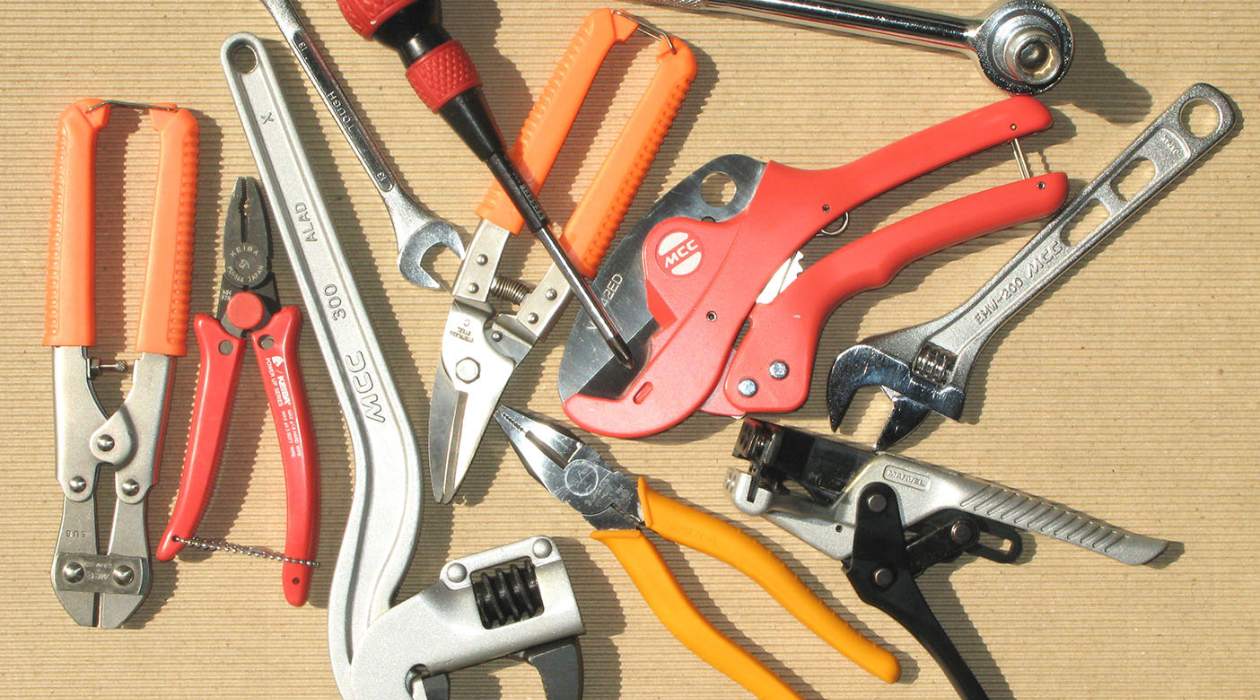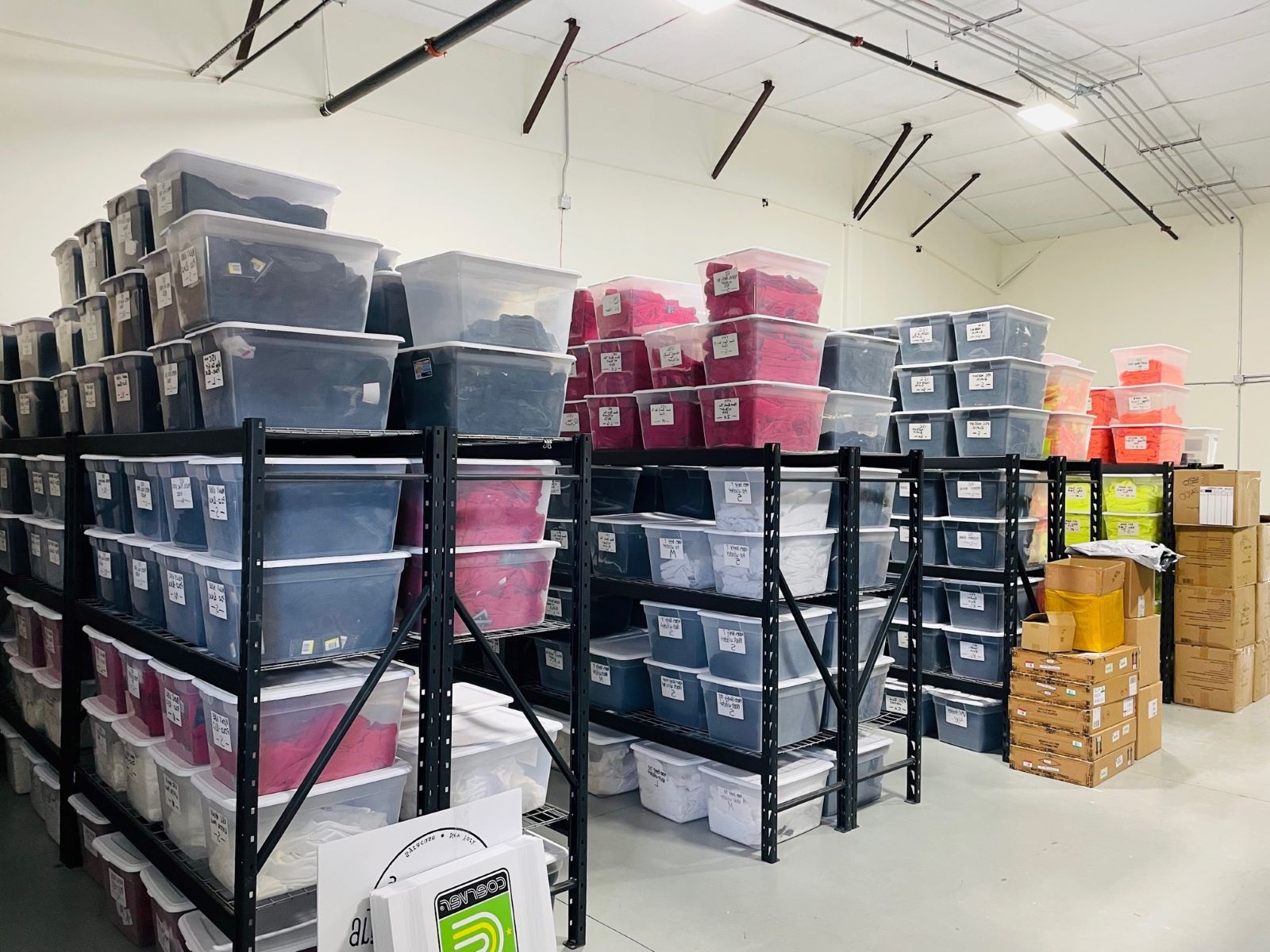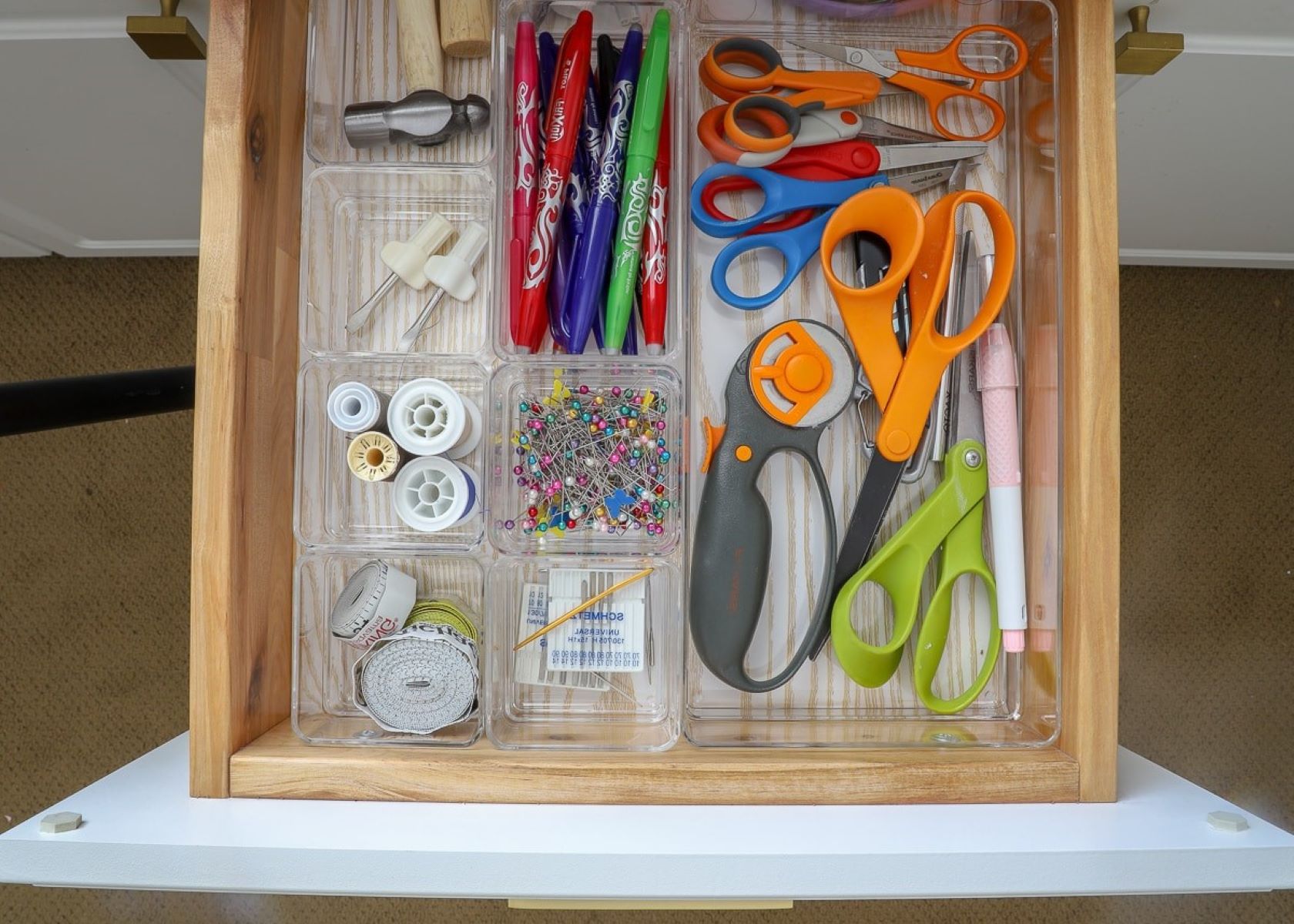Home>Renovation & DIY>Home Renovation Guides>How To Organize Handwritten Notes


Home Renovation Guides
How To Organize Handwritten Notes
Published: March 3, 2024
Learn how to efficiently organize your handwritten notes with our comprehensive home renovation guides. Streamline your note-taking process today!
(Many of the links in this article redirect to a specific reviewed product. Your purchase of these products through affiliate links helps to generate commission for Storables.com, at no extra cost. Learn more)
Benefits of Organizing Handwritten Notes
Organizing your handwritten notes can bring a multitude of benefits, making it easier to access and review information when needed. Here are some of the key advantages of keeping your notes in order:
-
Improved Retention: When you take the time to organize your notes, you reinforce the information in your mind. This can lead to better retention and understanding of the material.
-
Enhanced Productivity: An organized note-taking system allows you to quickly locate specific information, saving you time and boosting your productivity.
-
Reduced Stress: Cluttered and disorganized notes can be overwhelming. By organizing your handwritten notes, you can reduce stress and create a more calming study or work environment.
-
Better Revision: When it comes to revising for exams or referencing information for a project, having well-organized notes can make the process much smoother and more efficient.
-
Clearer Insights: By categorizing and sorting your notes, you can gain clearer insights into the connections between different pieces of information, leading to a deeper understanding of the subject matter.
-
Enhanced Creativity: A tidy and organized workspace can help to stimulate creativity and encourage innovative thinking. When your notes are organized, you may find it easier to generate new ideas and concepts.
-
Improved Goal Setting: Organized notes can help you track your progress and set clear goals, whether it's for academic, professional, or personal development purposes.
By taking the time to organize your handwritten notes, you can reap these benefits and more, ultimately improving your learning and productivity.
Key Takeaways:
- Organizing handwritten notes can improve memory, save time, reduce stress, and enhance creativity, leading to better learning and productivity.
- Choose the right note-taking system, categorize notes effectively, create digital backups, and maintain consistency to keep your note-taking organized and efficient.
Read more: How To Organize Meeting Notes
Choosing the Right Note-taking System
When it comes to organizing your handwritten notes, choosing the right note-taking system is crucial. There are various methods and systems available, and it's important to select one that aligns with your preferences and the type of information you need to organize. Here are some popular note-taking systems to consider:
1. Bullet Journaling
Bullet journaling is a versatile and customizable system that involves using bullet points, symbols, and rapid logging to organize information. It allows for quick note-taking and can be adapted to suit different learning or work styles.
2. Cornell Method
The Cornell method provides a structured format for note-taking, with sections for key points, supporting details, and a summary. This systematic approach can be particularly effective for academic note-taking and studying.
3. Mind Mapping
Mind mapping is a visual note-taking technique that involves creating diagrams to represent ideas and their connections. This method is great for brainstorming, organizing thoughts, and making complex information more digestible.
Read more: How To Organize Bible Study Notes
4. Outline Method
The outline method involves creating a hierarchical structure for notes, using bullet points, indents, and subheadings to organize information. It's a systematic approach that works well for capturing and organizing detailed content.
5. Digital Note-taking Apps
For those who prefer digital organization, there are numerous note-taking apps available, such as Evernote, OneNote, and Notion. These apps offer features like searchable notes, cloud storage, and the ability to add multimedia elements to your notes.
When choosing a note-taking system, consider factors such as your learning or work style, the type of information you need to organize, and whether you prefer analog or digital methods. It's also worth experimenting with different systems to find the one that best suits your needs and helps you maintain an organized approach to note-taking.
Sorting and Categorizing Notes
Sorting and categorizing your handwritten notes is a crucial step in maintaining an organized note-taking system. By organizing your notes into logical categories, you can streamline the retrieval process and make it easier to find specific information when needed. Here are some effective strategies for sorting and categorizing your notes:
-
Use Color Coding: Assigning different colors to specific topics or categories can visually distinguish between different sets of notes. For example, you might use one color for notes related to history, another for science, and so on. This visual cue can help you quickly identify and retrieve notes on a particular subject.
-
Create Tabs or Dividers: If you're using a physical notebook or binder, consider using tabs or dividers to separate different sections of your notes. Label each tab or divider with the corresponding category or topic, making it easy to flip to the relevant section.
-
Utilize Sticky Notes or Page Markers: Placing sticky notes or page markers with labels on different pages can serve as a quick reference for specific topics or key points within your notes. This method allows for easy navigation within your notebook or study materials.
-
Organize by Chronological Order: If your notes are time-sensitive or related to a sequence of events, organizing them chronologically can provide a clear timeline of information. This approach is particularly useful for historical or narrative-based notes.
-
Create a Master Index: For larger sets of notes, consider creating a master index that lists the categories or topics covered in your notes, along with the corresponding page numbers. This index serves as a roadmap to your notes, enabling you to locate specific information efficiently.
-
Utilize Digital Tags and Folders: If you're digitizing your handwritten notes, take advantage of digital tools that allow you to tag and categorize your notes into folders or sections. This digital organization makes it easy to search for and retrieve specific notes based on keywords or categories.
By implementing these sorting and categorizing strategies, you can maintain a well-organized system for your handwritten notes, ensuring that you can access and utilize your notes effectively.
Creating a Digital Backup of Handwritten Notes
In today's digital age, creating a digital backup of your handwritten notes is a prudent way to ensure the safety and accessibility of your valuable information. By digitizing your notes, you can safeguard against loss or damage while also gaining the benefits of easy searchability and portability. Here's how you can effectively create a digital backup of your handwritten notes:
-
Scanning: Use a scanner or a scanning app on your smartphone to capture high-quality digital images of your handwritten notes. Ensure that the scanned images are clear and legible, allowing for easy reading and reference.
-
Organize Digital Files: Create a dedicated folder on your computer or cloud storage service for storing your scanned notes. Organize the files by date, subject, or any other relevant categorization to facilitate quick retrieval.
-
Optical Character Recognition (OCR): Consider using OCR software or apps that can convert your handwritten notes into searchable and editable text. This technology allows you to extract and manipulate the text within your handwritten notes, making it easier to locate specific information.
-
Backup to Cloud Storage: To ensure redundancy and accessibility, back up your digital notes to a cloud storage service such as Google Drive, Dropbox, or OneDrive. Cloud storage offers the advantage of remote access and protection against physical loss or damage.
-
Digital Note-taking Apps: Explore digital note-taking apps that allow you to import and organize your handwritten notes. Many apps offer features such as handwriting recognition, annotation, and synchronization across devices, providing a seamless digital note-taking experience.
-
Consider Security: If your notes contain sensitive or confidential information, prioritize the security of your digital backup. Utilize encryption and secure access measures to protect your digital notes from unauthorized access.
By creating a digital backup of your handwritten notes, you not only safeguard your valuable information but also open up new possibilities for organizing, sharing, and utilizing your notes in a digital environment. This hybrid approach combines the tactile experience of handwritten notes with the practicality and versatility of digital storage and access.
Read more: What Note Breaks Glass
Tips for Maintaining an Organized Note-taking System
Maintaining an organized note-taking system is essential for long-term success and productivity. Here are some valuable tips to help you sustain an efficient and structured approach to managing your handwritten notes:
-
Regular Review and Cleanup: Set aside time at regular intervals to review your notes and remove any redundant or outdated information. This practice ensures that your notes remain relevant and uncluttered.
-
Consistent Formatting: Establish a consistent formatting style for your notes, including headings, bullet points, and numbering. This uniformity enhances readability and makes it easier to navigate through your notes.
-
Update and Expand: As you acquire new information, update and expand your notes accordingly. Incorporate new insights, additional details, or related concepts to keep your notes comprehensive and up to date.
-
Utilize Abbreviations and Symbols: Develop a set of abbreviations and symbols to streamline your note-taking process. This shorthand method can help you capture information more efficiently and save space on the page.
-
Create a Revision Schedule: Plan regular revision sessions to revisit and reinforce the content of your notes. Spaced repetition can aid in long-term retention and understanding of the material.
-
Seek Feedback: If your notes are used for academic or professional purposes, seek feedback from instructors, colleagues, or peers. Constructive input can help you refine your note-taking approach and improve the effectiveness of your notes.
-
Mindful Organization: Be mindful of how you organize your notes, ensuring that the chosen method aligns with your learning or work style. Adapt and refine your organizational approach based on feedback and personal experience.
-
Backup and Redundancy: In addition to creating a digital backup, consider implementing redundancy in your note-taking system. This may involve maintaining duplicate copies of critical notes or utilizing multiple storage solutions for added security.
-
Reflect and Adapt: Take the time to reflect on the effectiveness of your note-taking system. Identify areas for improvement and be open to adapting your approach based on evolving needs and preferences.
-
Embrace Flexibility: While maintaining structure is important, allow for flexibility in your note-taking system. Adapt to changes in your workflow, learning environment, or technological advancements to optimize your note-taking process.
By incorporating these tips into your note-taking routine, you can establish and maintain a well-organized system that supports your learning, productivity, and overall success.
Frequently Asked Questions about How To Organize Handwritten Notes
Was this page helpful?
At Storables.com, we guarantee accurate and reliable information. Our content, validated by Expert Board Contributors, is crafted following stringent Editorial Policies. We're committed to providing you with well-researched, expert-backed insights for all your informational needs.














0 thoughts on “How To Organize Handwritten Notes”